
Adobe Experience Manager Assets
An AI-powered DAM to scale modern experiences.

Streamline content production and intelligently deliver rich media experiences when and where your customers want them. Adobe Experience Manager Assets is a customizable digital asset management system (DAM) that lets you easily discover, govern, and activate millions of assets so you can deliver and scale personalized experiences.
What is Adobe Experience Manager Assets?
The industry-leading Adobe solution goes beyond asset management with sophisticated, user-friendly tools, AI-powered features, and collaborative workflows that let marketers get experiences into the world faster.
Adobe Experience Manager (AEM) Assets is a digital asset management (DAM) system that helps organizations manage, organize, and distribute their digital assets. It provides a centralized repository for images, videos, documents, and other media, allowing users to easily find, manage, and share these assets across different channels and teams. AEM Assets also integrates with other Adobe products, enhancing workflows and content delivery.
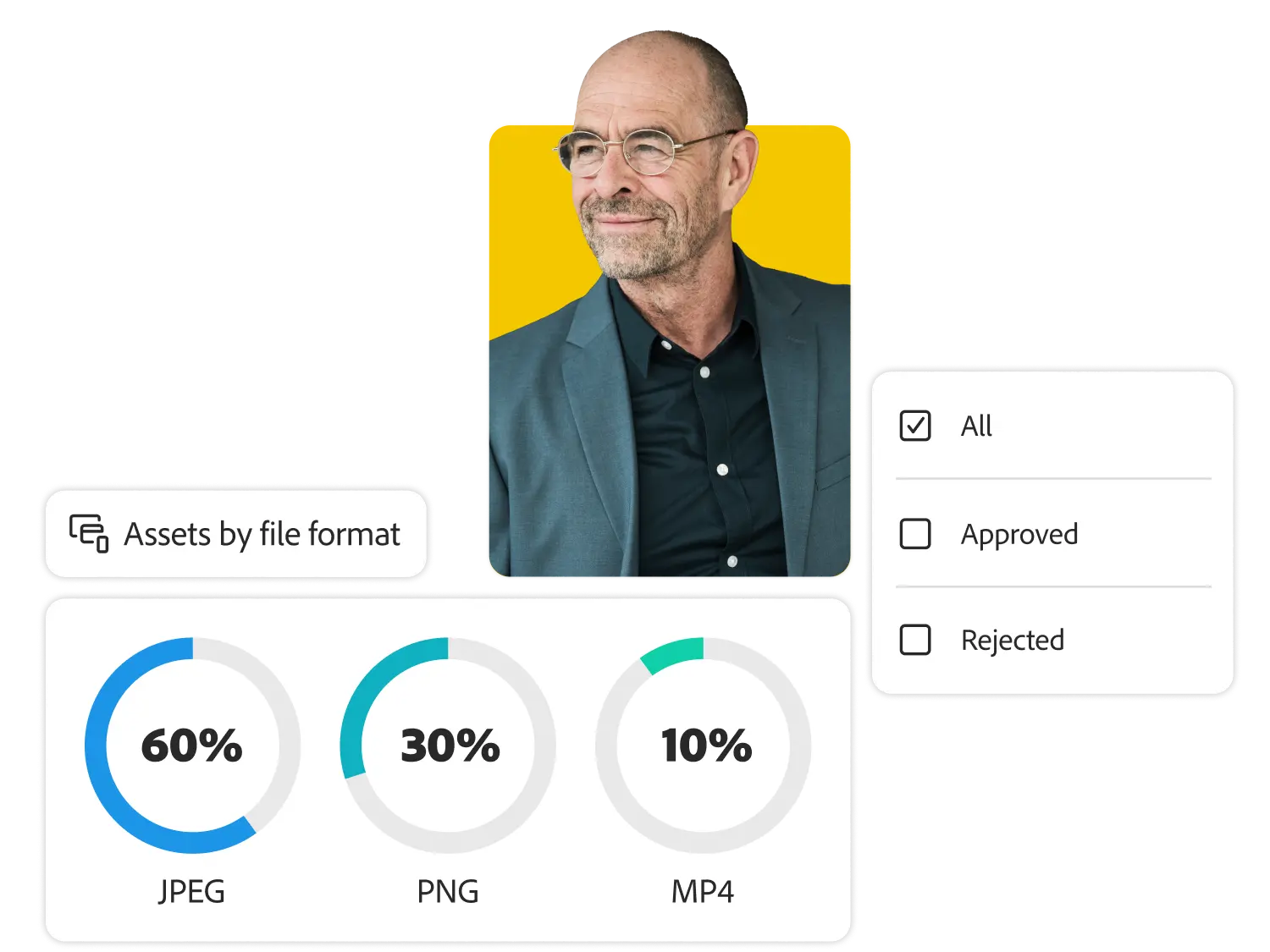
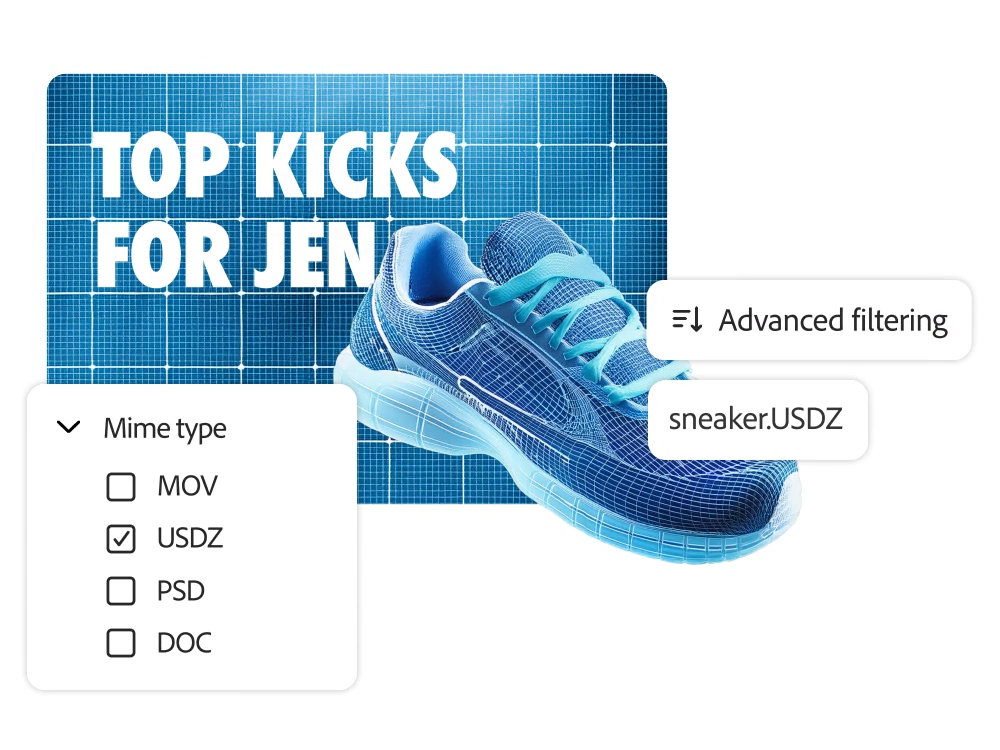
Discovery
A user-friendly system to manage millions of assets.
Easily ingest, organize, and classify millions of assets so you can quickly find what you need for your projects or campaigns.
- Upload any type of asset — including 3D and other rich media — using bulk ingestion or by connecting to storage applications.
- Eliminate manual organization processes with features that automatically group and classify assets and their metadata so they’re easy to find.
- Use advanced search and filtering functionality to find assets quickly in the DAM, across multiple instances of Experience Manager Assets, or wherever your team works.
- If you can’t find what you need in your asset library, create new assets using Adobe Firefly generative AI to generate assets that fit your queries.
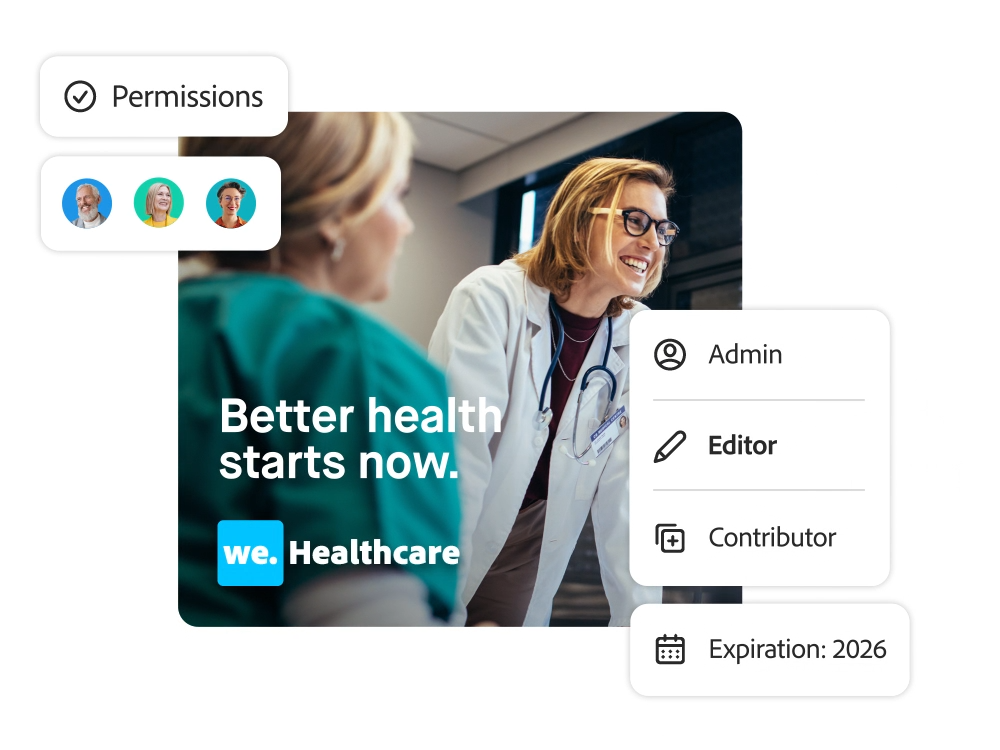
Governance
Advanced governance, permissions, and compliance.
Use digital rights management features to ensure legal and brand compliance of content usage.
- Create permissions for different roles, manage asset expiry dates, and control asset access.
- Remove access to outdated assets to protect brand integrity and use digital rights management tools to maintain legal compliance.
- Reduce clutter with versioning and duplication detection tools and improve efficiency with customizable workflows.
- Tap into Brand-Aware Tagging to generate metadata tags based on what’s shown in your images and to automate the translations of tags so they’re searchable globally.
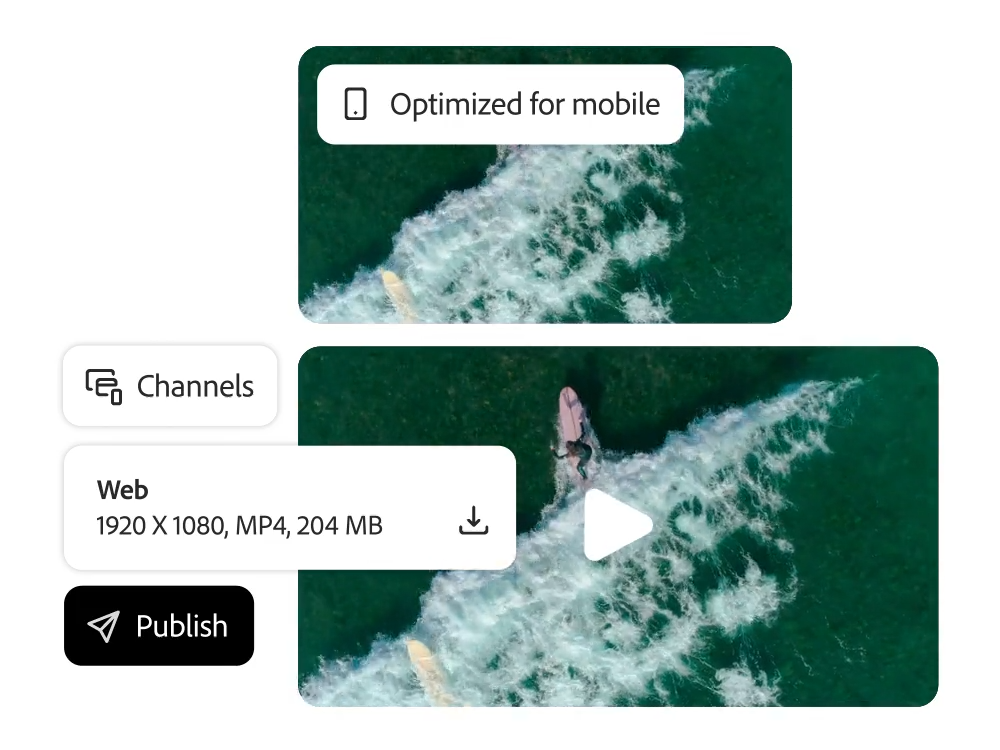
Activation
Asset optimization and activation for better experiences.
Access, transform, deliver, and optimize millions of assets to give customers the highest quality experience on any channel.
- Quickly deliver brand-approved assets across channels using advanced asset management and delivery tools.
- Optimize and resize image and video content to meet downstream requirements or viewer bandwidth.
- Adapt, remix, and transform content to maximize asset usage for any screen with automations for imagery and rich media, including video and 3D.
- Utilize Dynamic Media Templates to tailor personalized content with templates that react to contextual real-time insights.
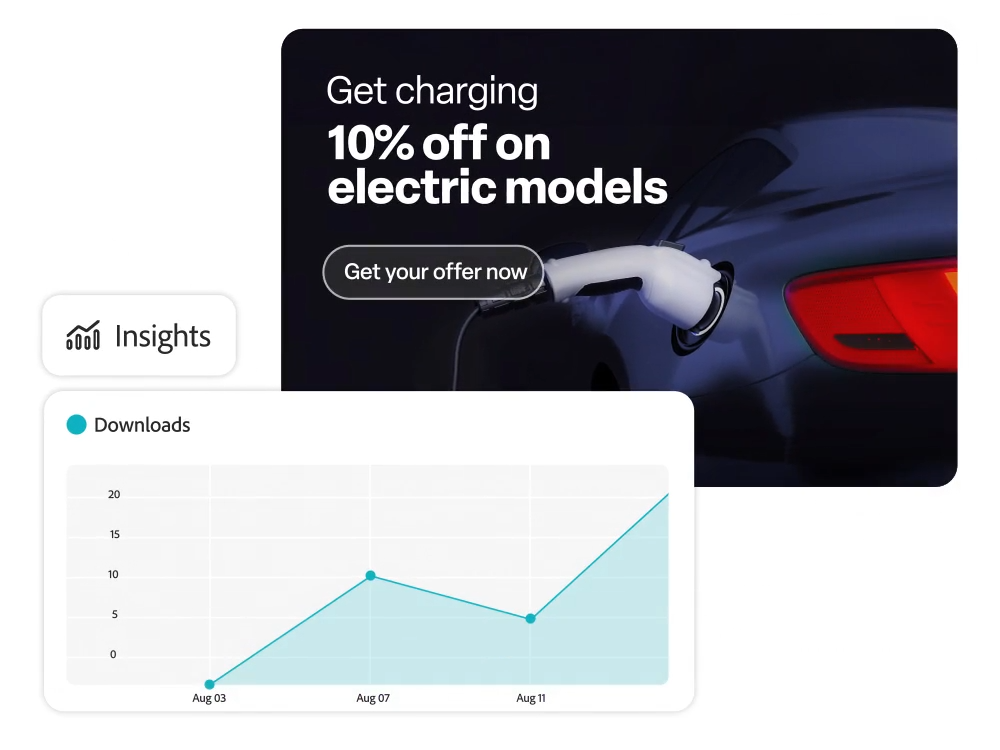
Insights
Asset analysis and performance insights.
Understand the value and usage of your assets to improve future experiences.
- Discover asset usage data, such as top downloads, to determine which assets are being activated and where they could be reused.
- Understand asset performance across channels with first- and third-party analytics integrations.

Digital enrollment and forms
Adobe Experience Manager Forms is a comprehensive digital document solution that simplifies the creation of responsive, user-friendly forms. It enables customers to complete and securely e-sign documents with ease—delivering a seamless experience from initial engagement to long-term retention.

Learn more about your assets with Adobe Target
Adobe Experience Manager (AEM) Assets can be integrated with Adobe Target to enable personalized content delivery and testing. This integration allows users to leverage AEM’s content management capabilities and Adobe Target’s personalization and testing features to create tailored experiences.
- Personalization and Testing: By integrating AEM and Target, users can personalize content, create A/B tests, and optimize experiences based on user behavior and other contextual data.
- Content Fragments: Similarly, AEM Content Fragments can also be exported to Target as offers, enabling headless content delivery and personalization.
- Enhanced Engagement: By delivering tailored experiences, the AEM-Target integration can lead to increased user engagement and satisfaction.
Forrester names Adobe a Leader in Digital Asset Management
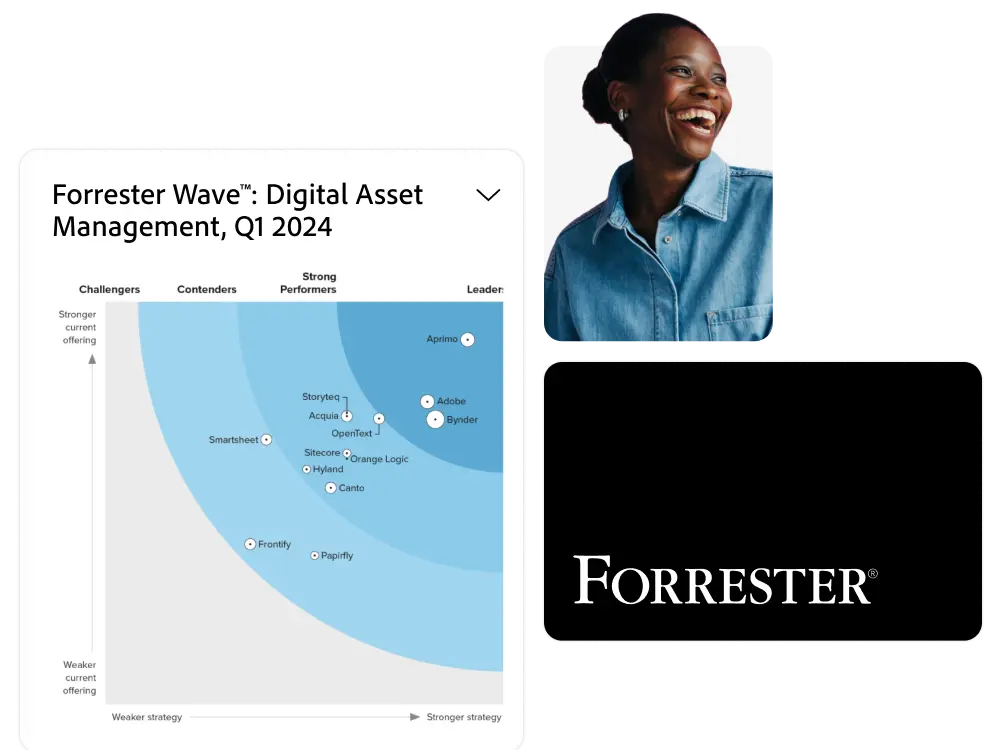
Making the case for digital transformation
By expanding its Adobe Experience Cloud footprint with Adobe Commerce and Adobe Experience Manager as a Cloud Service, Sunbelt Rentals built a solid platform aimed at turning its traditional person-to-person sales model into a scalable and modern multichannel experience.
“Authors create content in hours instead of weeks, without needing support from developers or IT resources. This drives a much faster time to market for content, giving customers the experience they expect.”
— Tyler Stafford , Senior Director of Product Management, Sunbelt Rentals


Adobe Experience Forms + Adobe Acrobat Sign
Pair these applications to support complex e-signature requirements while maintaining security and compliance — and get customers across the finish line faster.
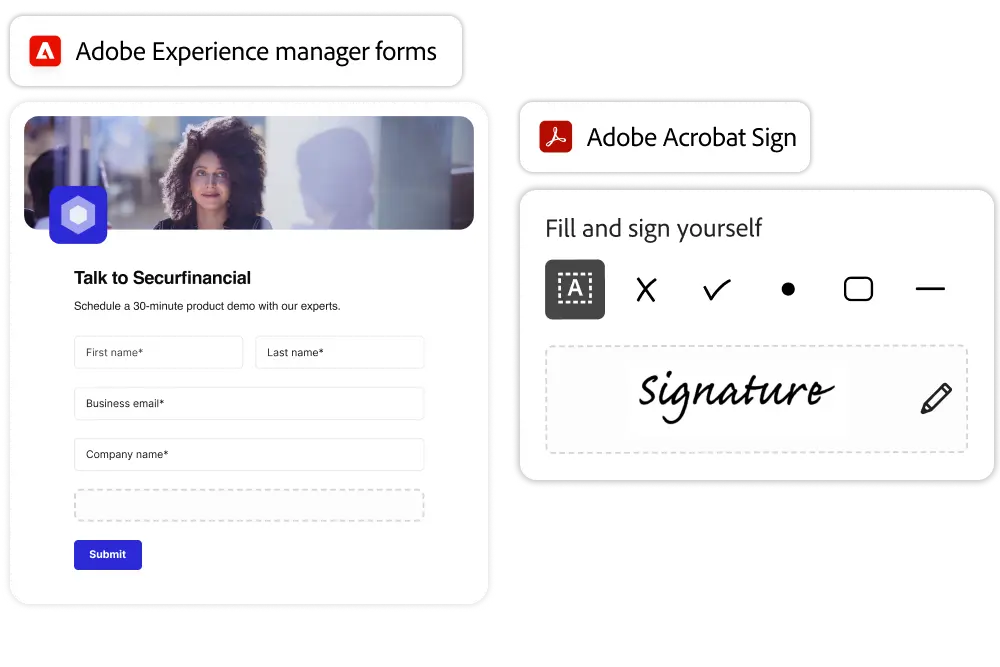
Have questions? We have answers.
What is a digital asset management platform (DAM)?
A digital asset management platform (DAM) allows you to organize, discover, and activate all your digital content and streamline content operations and workflows.
What is metadata and why is that important?
How can a DAM automate and activate content?
What is digital rights management (DRM)?
Digital rights management (DRM) refers to all the processes, policies, and technologies that organizations use to control how digital content creators use and share digital assets. DRM protects intellectual property according to relevant copyright laws to protect both content owners and corporations as they distribute and create content across the internet.
What should I look for in a DAM?
The Adobe difference.
A global brand you can trust.
As a leader in digital experiences trusted by Fortune 500 companies and small businesses around the world, Adobe has invented globally renowned solutions from Acrobat to Creative Cloud that transform businesses.
The leader in digital documents.
Standardize your document experiences with the global digital documents leader. With Adobe, you get built-in security and accessibility controls, making content more secure and usable for all.
Powering business at scale, worldwide.
More than 320 billion PDFs were opened or created with Acrobat in the last 12 months, and more than 8 billion documents have been signed.
